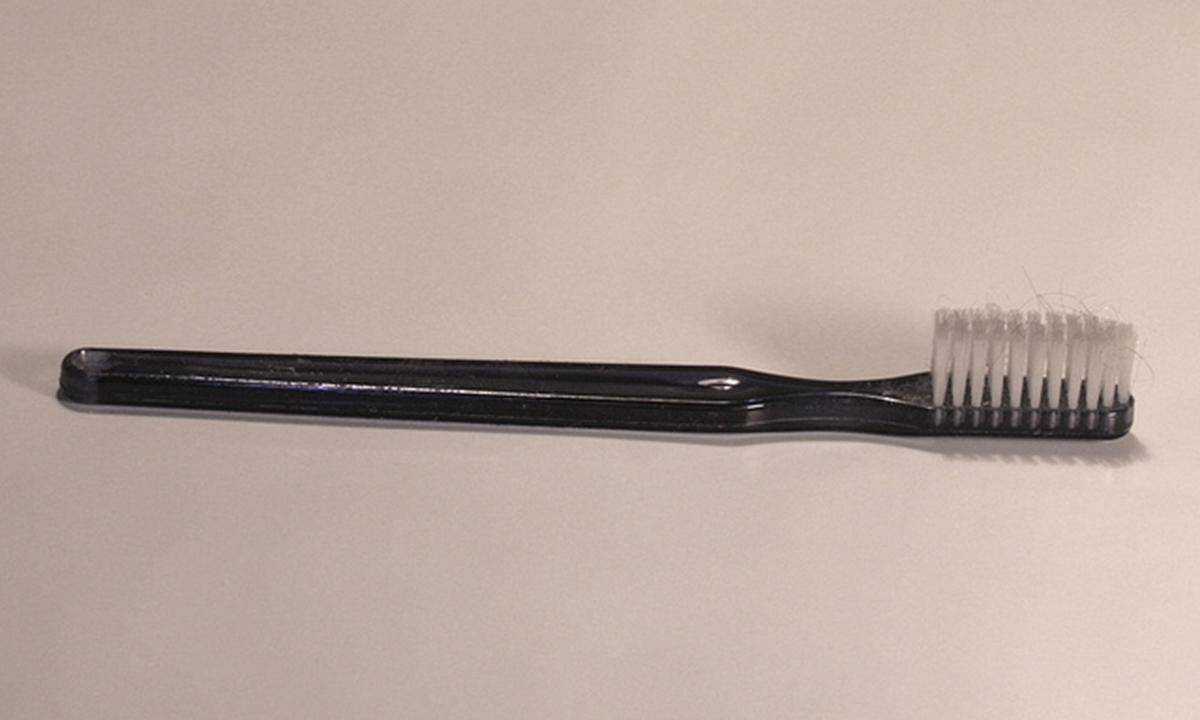Table of Contents
Cleaning Your Toothbrush
Certain precautions will help prevent your toothbrush from becoming a biological weapon! The first and most obvious thing to do is to change your toothbrush after every three to four months. This time period could be a little smaller as well if you feel that your toothbrush bristles are wearing away, or are bent or frayed. The longer you use your toothbrush, the bigger the chance that it has become home to disease-causing pathogens. Broken or damaged bristles will also result in a larger number of micro-organisms being colonized every time you brush.

Make sure that you store your brush vertically and allow your toothbrush air dry completely before use. Studies have shown that just the simple act of allowing your brush to dry out completely before use helps reduce the amount of contamination by a considerable amount. You can also have a separate toothbrush for daytime and nighttime use. This will allow the brush to dry 24 hours instead of the usual 12. The brushes should not be stored with any protectors or any other covering and should ideally not be stored inside a closed chamber/cupboard either.
You can use an over the counter mouthwash for the same. This rinse can also be done post brushing before you store your brush as well. An ideal situation might be where you use disposable toothbrushes, however that might be a little too expensive in the long run, especially considering that new toothbrushes can harbor micro-organisms straight out of the packaging. After all, they are not required to be sterile before they are packaged.
How Dangerous Is Your Toothbrush?
This is something that the scientific community is still debating. Some scientists put forward a point of view that when there are extremely large numbers of micro-organisms in the oral cavity already, a few more entering your mouth will not make much of a difference. After all, our mouth is constantly exposed to the environment anyway. Others have a different point of view. They say that since the kind of micro-organisms found growing on the toothbrush are known to play important roles in oral diseases, their presence cannot be ignored. The immunity of people also varies greatly and so while some may not be affected at all by an increase in the amount of infectious organisms, other very well might be. Micro-organisms associated with systemic infections can also be transmitted through contaminated toothbrushes, an aspect which is being researched in further detail.
READ Dental Tourism: What, Why, And Where
Our take is that the precautions needed to eliminate this potential source of infection aren't much of a hassle. Clean your brush properly, store it appropriately, and make sure you do not use your brush longer than you should. That’s it. No harm is going to come from being careful and following these recommendations, so we might as well do it.
- Photo courtesy of ivydawned: www.flickr.com/photos/ivydawned/4670376552/
- Photo courtesy of tinney: www.flickr.com/photos/tinney/2734437976/
- 1. http://www.ada.org/en/about-the-ada/ada-positions-policies-and-statements/statement-on-toothbrush-care-cleaning-storage-and-
- 2. Indian J Dent Res. 2011 Jan-Feb
- 22(1):2-5. doi: 10.4103/0970-9290.79965.
- Assessment of microbial contamination of toothbrush head: an in vitro study. 3. Contamination of a toothbrush with antibacterial properties by oral microorganisms. Journal Of Dentistry. April 2007 Volume 35, Issue 4, Pages 331–337

